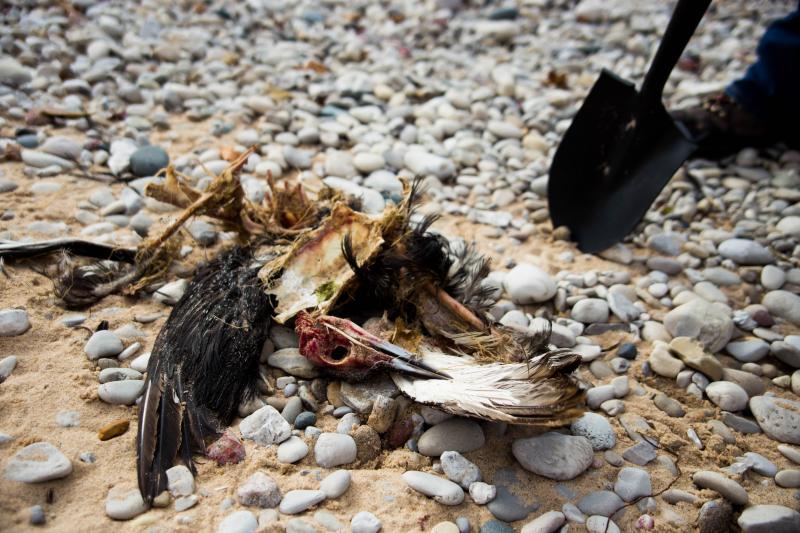
Sleeping Bear Dunes National Lakeshore is famous for its natural beauty.
But on this November day, the beach is littered with about two dozen dead birds: scoters, loons, ducks and others.
Dan Ray of the National Park Service is working to keep the beach clean … and safe.
Standing over a carcass, he says, “OK, so we have a long-tailed duck and we’re going to pick that up away from the shoreline, take it up into the foredune and then we dig a hole two feet deep and bury it so it’s away from park visitors and pets and no longer a threat to public health.”
Then his methodical digging begins.
LISTEN TO THE AUDIO STORY HERE
Ray and others say the deaths are due to botulism, a disease caused by bacteria. The problem is set off by a chain reaction.
After summer warms the lake, invasive mussels contribute, says Jeanie Williams, a biologist with the Inland Seas Education Association.
“The mussels are eating all this stuff and then they produce waste like all living things do, and that waste has all kinds of nutrients in it, lots of nitrogen, lots of phosphorous,” she says. “And because there’s a lot of nutrients at the bottom of the lake, and a lot of sunlight, that means the algae can grow as much as it possibly can.”
When that algae decomposes, it creates the perfect environment for toxic bacteria to get into the food chain.
Scientists say people and pets are safe if botulism isn’t ingested.
—
From our partners at Great Lakes Today




